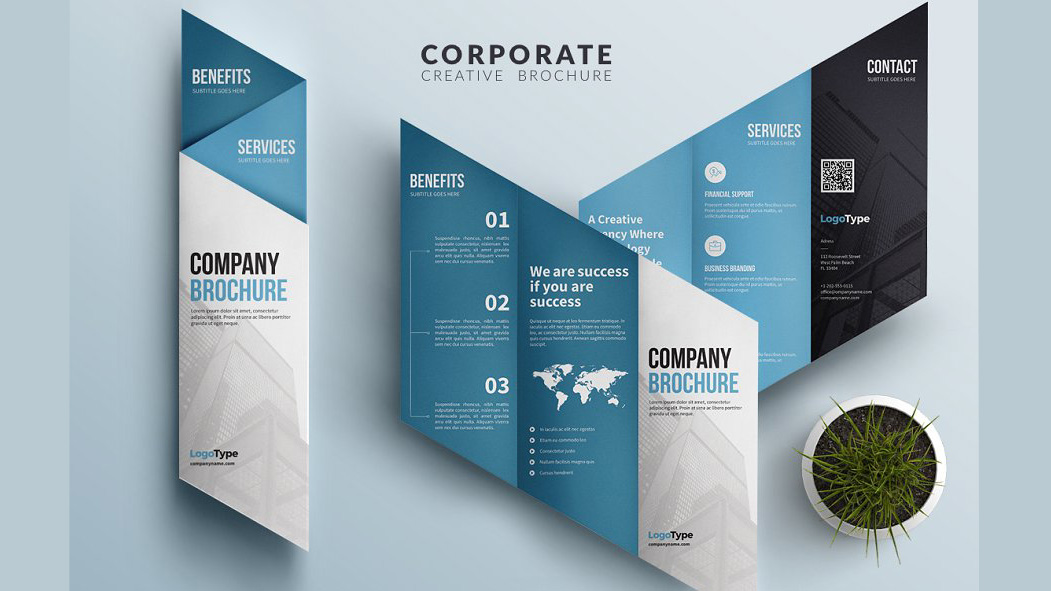Creating a brochure for international audiences requires more than just translating your text. It’s about understanding different cultural perspectives, communication preferences, and design aesthetics that resonate globally. When businesses in Dubai or anywhere else expand into international markets, their marketing materials—especially brochures—must adapt to connect authentically with diverse audiences. The following guide explores how to strategically optimize brochure content for international readers to ensure clarity, appeal, and impact.
Understanding Your Global Audience
Before you begin designing or writing, research your target markets thoroughly. Every region has unique values, norms, and expectations that influence how messages are perceived. For example, colors, imagery, and even humor can carry different meanings across cultures. A brochure that works perfectly in Europe might not have the same impact in Asia or the Middle East.
Start by identifying your key regions and audience segments. Ask questions like:
-
What languages do they speak?
-
What are their primary motivations or pain points?
-
What kind of imagery or tone do they respond to?
-
How do they view authority, innovation, or trust in branding?
These insights will help you craft a message that feels both relatable and respectful to local audiences.
Language Localization, Not Just Translation
One of the biggest mistakes businesses make is treating translation as a one-size-fits-all solution. Direct translation often fails to convey nuance, emotion, or context. Localization, on the other hand, adapts your message so it sounds natural in the target language. It involves rephrasing idioms, adjusting cultural references, and modifying examples that might not make sense elsewhere.
For instance, a brochure promoting winter deals with snow-covered imagery might not resonate with audiences in tropical regions. Similarly, a call-to-action like “Let’s shake on it!” might not translate well in cultures where physical gestures have different meanings.
To optimize your brochure, work with native-speaking copywriters or localization experts. They can ensure your message maintains its persuasive tone while aligning with cultural norms.
Choose Universal Visual Language
Visuals are often the first thing people notice in a brochure, so they need to be inclusive and globally appealing. Avoid images that may unintentionally exclude or alienate certain groups. For instance, using only Western models in a brochure targeting Middle Eastern or Asian markets may limit its effectiveness.
Opt for images that reflect diversity—people of different ethnicities, genders, and ages. Use icons, illustrations, and colors that have positive, cross-cultural connotations. For example, blue generally symbolizes trust and stability in most cultures, while red can evoke very different emotions depending on the region—prosperity in China but caution in Western contexts.
Consistency is key. Your visuals should reinforce your brand identity without alienating any particular audience. If you’re using the expertise of Brochure Design Services in Dubai, ensure they understand how to craft visuals that align with global sensibilities while maintaining regional relevance.
Adjust Content Tone and Style
Tone plays a significant role in how your message is received. Some cultures prefer direct, assertive language, while others value politeness and subtlety. For instance, American audiences might appreciate energetic, informal copy, while Japanese or German readers could prefer more formal, factual, and respectful language.
Adapt your writing style based on cultural communication preferences. A good approach is to maintain a neutral yet engaging tone that can work across different markets. Avoid jargon, idioms, or wordplay that could confuse non-native speakers. Keep sentences concise and use simple vocabulary to make translation easier and comprehension smoother.
Be Mindful of Units, Dates, and Formats
Details matter when speaking to an international audience. Using unfamiliar measurements, currencies, or date formats can create confusion or even mistrust. For instance, U.S. audiences use inches and dollars, while European audiences prefer centimeters and euros. Similarly, date formats vary widely—writing “05/10/2025” could mean May 10 or October 5, depending on the region.
Standardize your units or use dual formats (e.g., “10 inches / 25 cm”) where appropriate. When possible, tailor your brochure versions by region to ensure all numerical and contextual details feel local and intuitive.
Highlight Global Benefits, Not Just Local Features
When creating content for an international brochure, focus on universal benefits rather than localized features. Instead of emphasizing aspects relevant only to one region, communicate how your product or service adds value globally.
For instance, if you’re promoting a technology solution, focus on benefits like efficiency, security, or scalability—concepts that resonate worldwide. Avoid references that might feel too localized, such as local awards, slang, or region-specific certifications unless they have global recognition.
This approach ensures your brochure communicates consistent value across all target markets while maintaining cultural sensitivity.
Adapt Layout and Reading Direction
Design isn’t universal. Reading direction, spacing, and layout preferences differ across cultures. English and most European languages read left to right, but Arabic and Hebrew read right to left. When targeting such markets, your brochure design should adapt accordingly, mirroring the layout to maintain visual balance.
Typography is equally critical. Ensure the font you use supports multiple languages, including characters like Arabic, Chinese, or Cyrillic scripts. Choose legible, web-safe fonts that retain aesthetic appeal across translations. Also, be prepared for text expansion—translated content can take up more or less space than the original English version.
Use Globally Recognizable Symbols and Icons
Icons can transcend language barriers—but only when chosen wisely. Some symbols that seem universal might not be understood everywhere. For example, a mailbox icon may be instantly recognized in the West but could be confusing in regions where mailboxes look different. Similarly, the “thumbs-up” gesture isn’t positive in every culture.
To ensure universal comprehension, test your icons and graphics with representatives from your target regions or consult cultural experts. Choose icons that clearly communicate your message without relying heavily on cultural assumptions.
Leverage Cultural Storytelling
Storytelling is a powerful marketing tool, but stories must align with the values of the target audience. Western audiences might respond to individual success stories, while Asian or Middle Eastern audiences may resonate more with community-oriented narratives.
When optimizing your brochure, adapt your storytelling to reflect these cultural priorities. Include case studies or testimonials from customers in different regions. This adds authenticity and makes your brand appear globally trusted.
Include Multilingual Contact Options
Your brochure should make it easy for international readers to reach you. Include contact information that accommodates different regions—international phone codes, local office addresses, or region-specific website URLs.
If your company operates globally, consider adding QR codes that lead to localized landing pages or multilingual digital brochures. This approach bridges the gap between print and digital while giving audiences access to region-specific content.
Test Your Brochure Before Global Distribution
Before launching your brochure internationally, conduct usability tests. Share it with focus groups or regional partners and gather feedback on readability, design, and message clarity. Even small adjustments—such as changing a word or modifying an image—can significantly improve engagement.
Once refined, track responses from each region to identify what works best and where further optimization is needed. Continuous improvement is the key to maintaining relevance in diverse markets.
Conclusion
Optimizing your brochure content for international audiences is both an art and a science. It requires balancing cultural sensitivity, clear communication, and consistent branding. From language localization and design adjustments to culturally attuned storytelling, every element must work together to create a seamless, inclusive experience.
When executed thoughtfully, a globally optimized brochure can serve as a powerful ambassador for your brand—bridging cultural divides and fostering trust with audiences worldwide. Businesses seeking professional expertise can benefit from Brochure Design Services in Dubai, where designers understand how to blend global appeal with regional sophistication, ensuring your message connects across borders.
A well-optimized brochure doesn’t just communicate information—it builds relationships, inspires confidence, and opens doors to new markets around the world.



